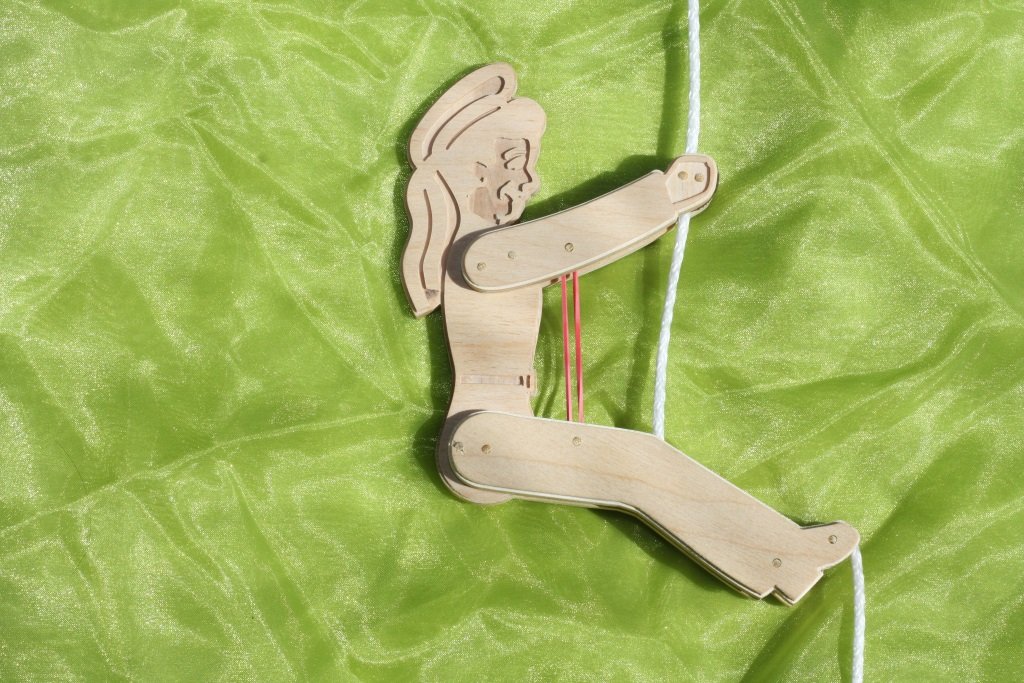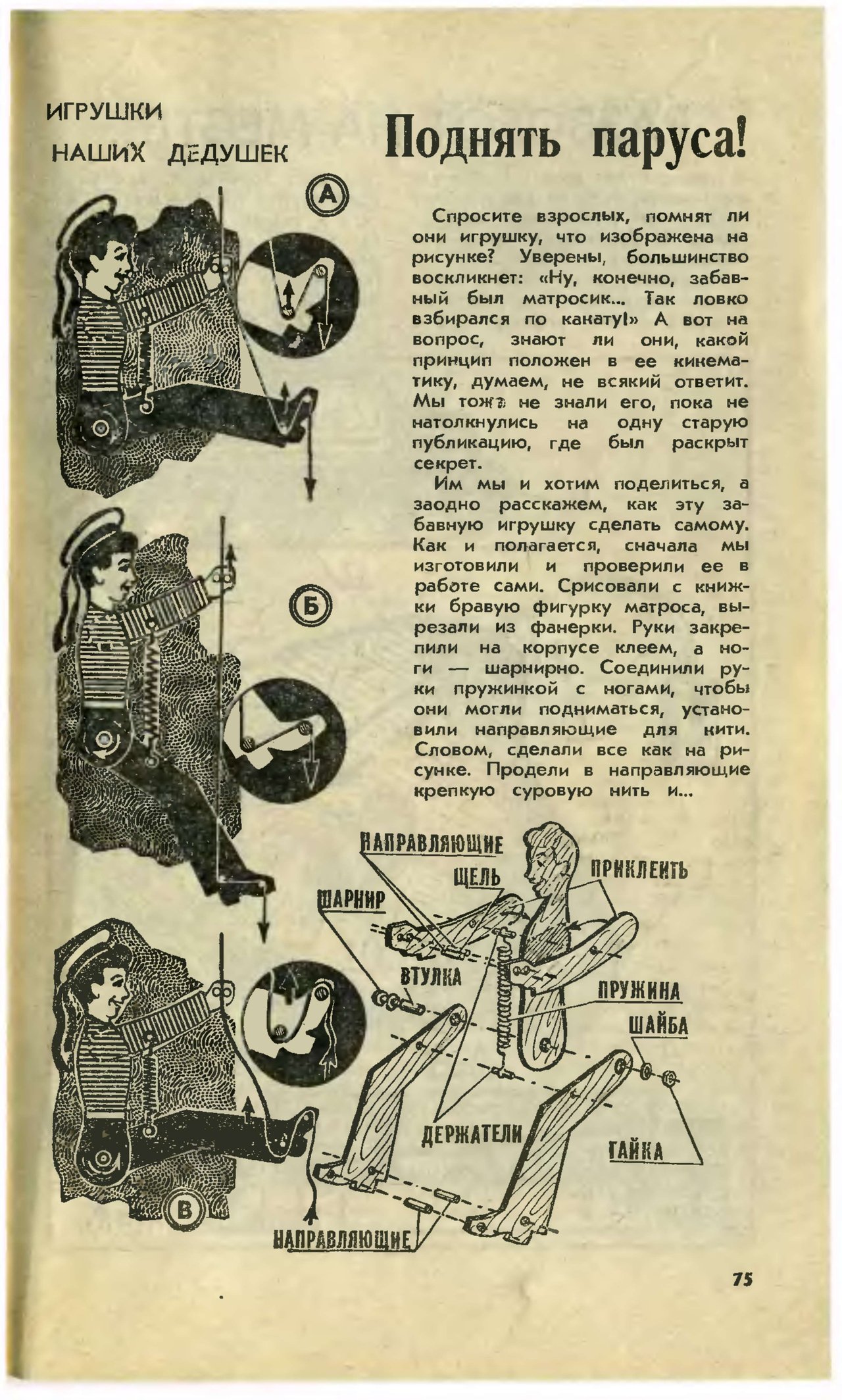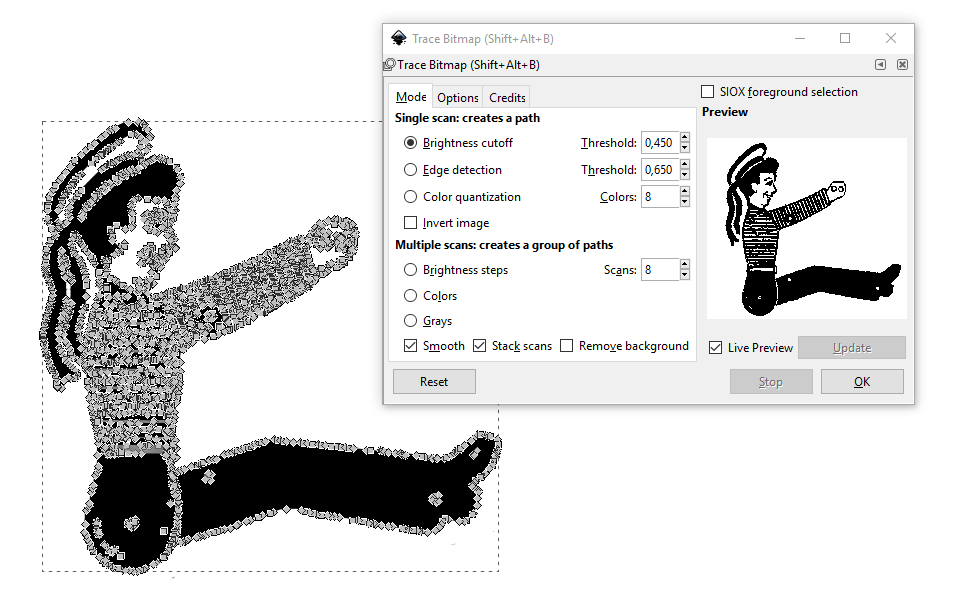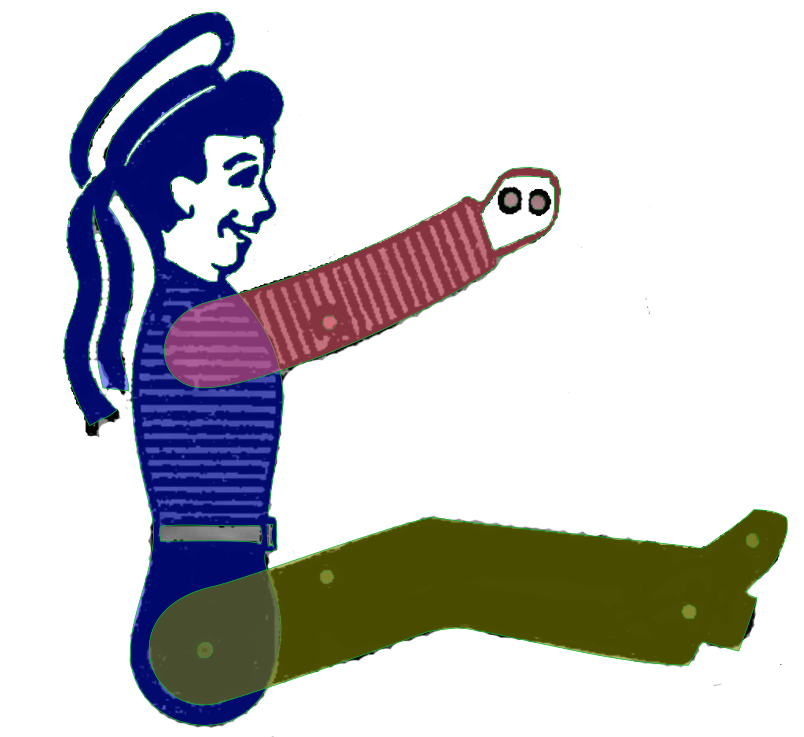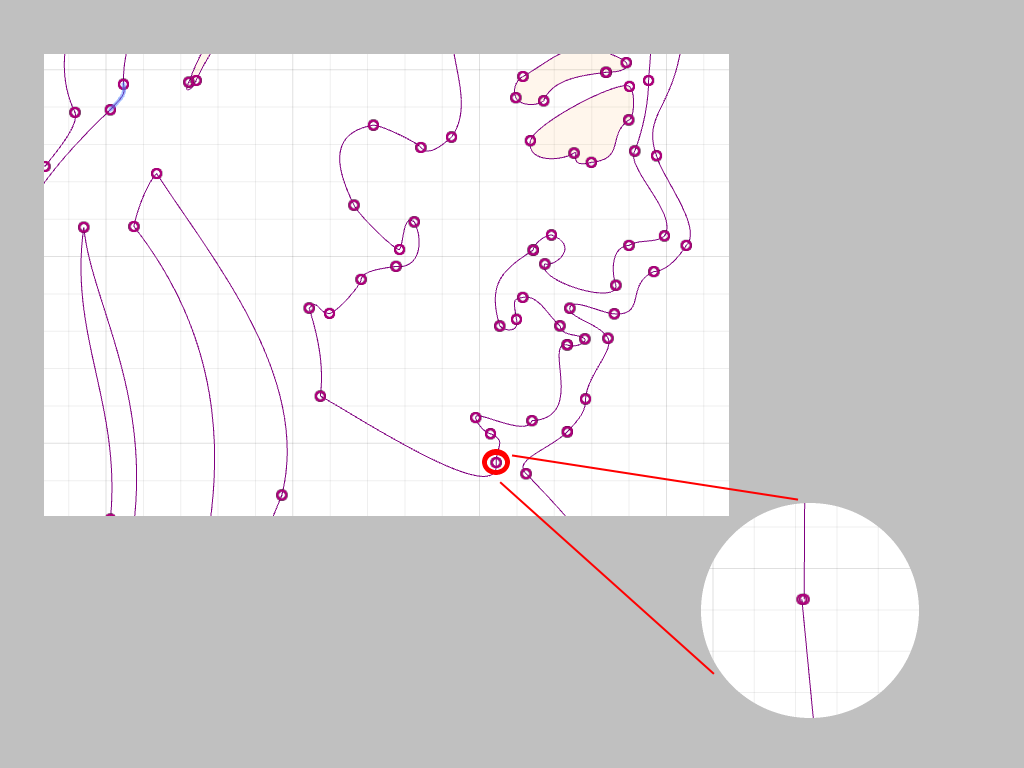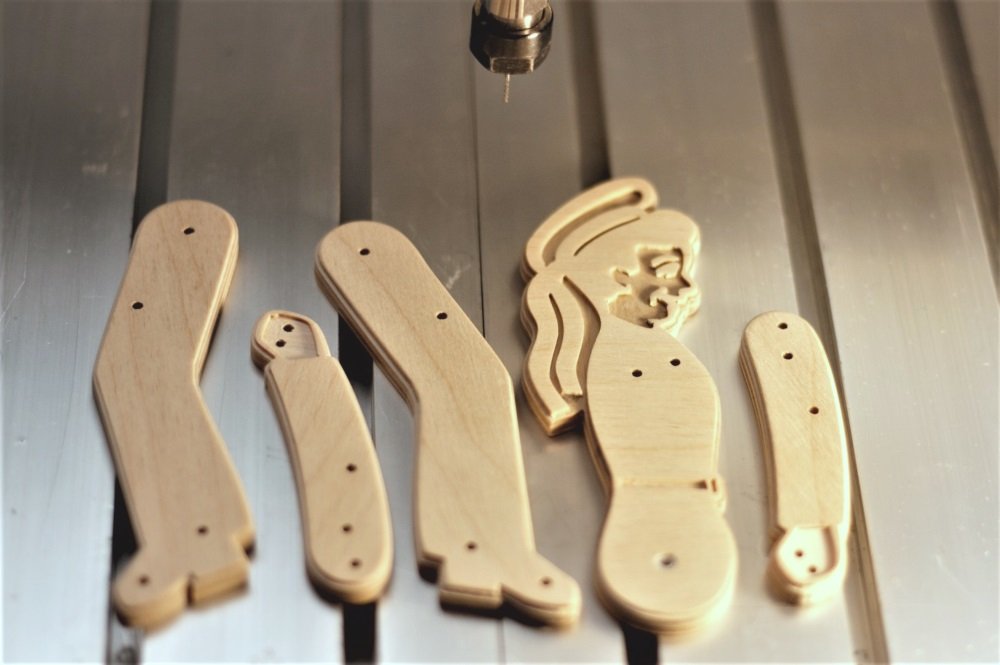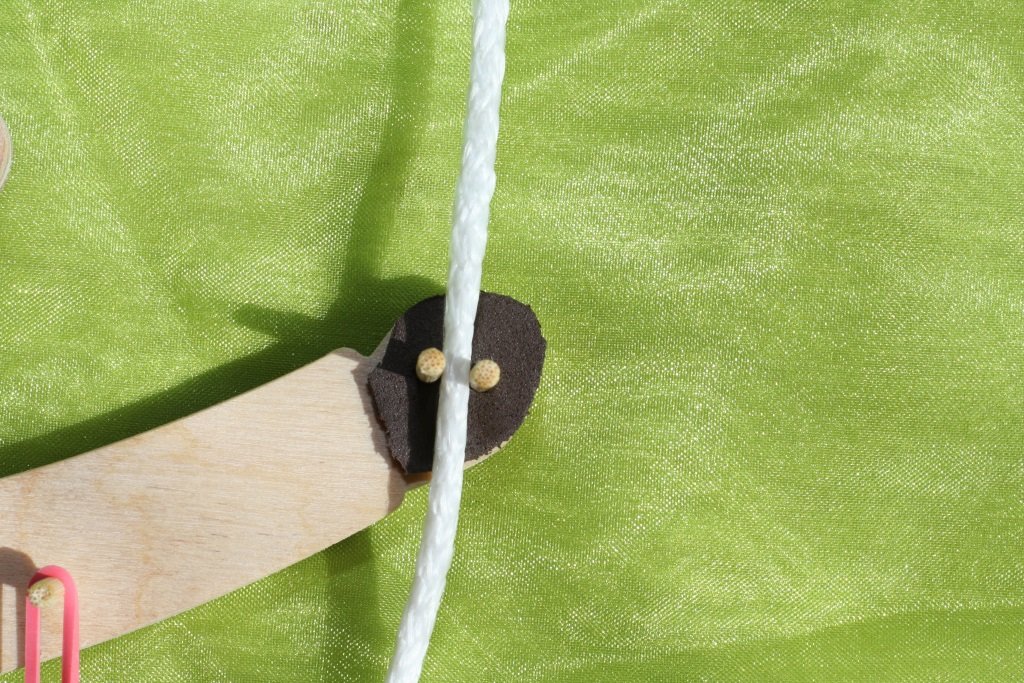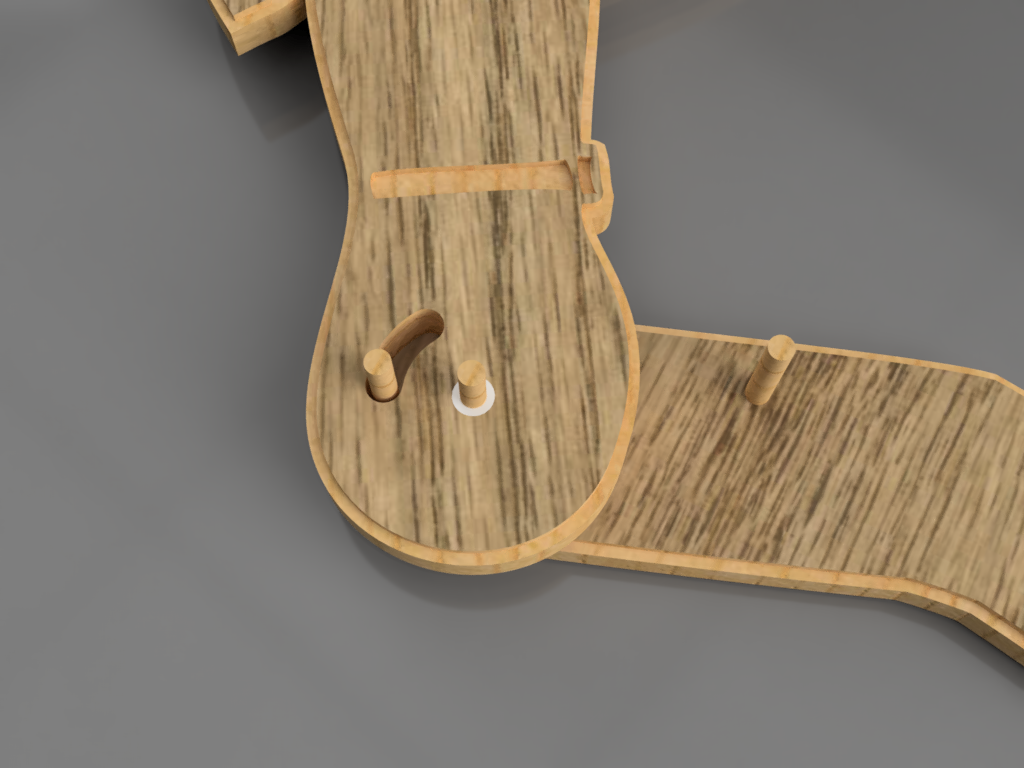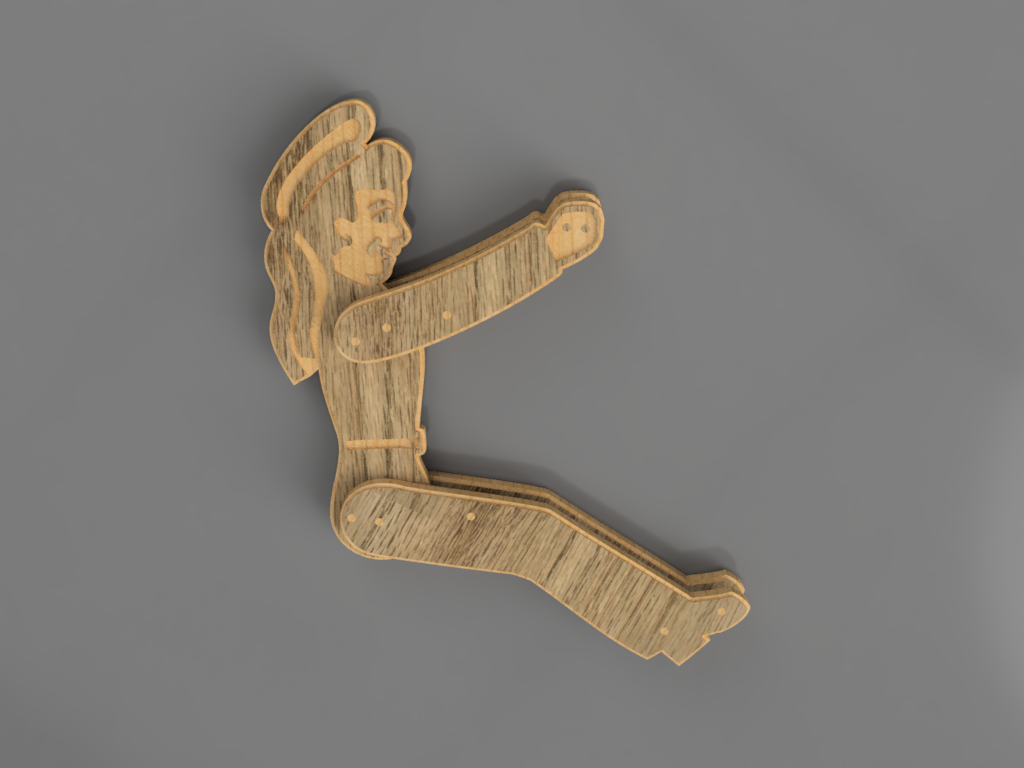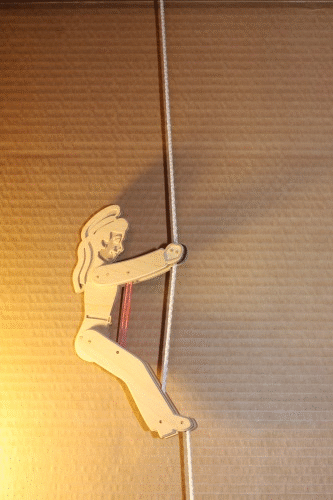Repository
https://github.com/beetlevc/climber
Introduction
Friday night, when I was feeling especially nostalgic, I found a few old issues of a magazine I used to read as a kid. I was browsing through the pages, recalling old days. Then I stumbled upon an article about making a simple toy. It was a funny wooden sailor climbing a rope. I remembered this toy right away. It was in April issue of the magazine and I got it soon after my 12th birthday.
Even then I already liked making stuff and articles like this were my favorite. I remembered making two of these toys. The first one came out a bit crooked, and I later traded it to a classmate for a length of rubber cord, I needed for my other projects. The second one came out perfect and worked just fine, so I left it for myself. For a moment, I thought about finding this old toy but gave up the idea. Chances I could find it after almost 30 years were pretty slim. I went for the next best thing and decided to remake the toy. Today with modern tools it should be much easier.
Here is a post about this quick weekend project. You will find all the files needed to reproduce this toy in the project repository.
Designing and making the toy
I cleaned up the scanned sketch and removed the background. Then I imported raster image into Inkscape vector editor. I used "Trace Bitmap" tool to vectorize raster image.
As you can see it produced too many points. A sketch with such a large point count won't work smoothly in the CAD. We need to cut down point count significantly before we can proceed further. The "Path - Simplify" tool in Inkscape does exactly that! I simplified generated path, then tweaked a few points here and there. Then I split it into layers, with arms, legs, and body each in a separate layer. Here is my final result.
Now it's time to design the CAD model. My CAD of choice is Autodesk Fusion 360. It's a complete CAD/CAM solution, and it's free for hobbyist users!
First, let's create a sketch and import our SVG into this sketch. Sometimes SVG import may produce broken outlines. This has to be fixed before extruding imported geometry. It is not always easy to pinpoint the problem part of the outline. An algorithm we all know and love from CS can help us to pinpoint the problem, it's binary search! Simply divide problem contour in two with a line and check which of two parts still has the problem spot. Repeat this step several times to narrow down the search area, then look at it closely with maximum zoom level. When you find this open contour, close it with a short line segment.
The rest was easy. I extruded parts, created components, joined them together. You'll find all the steps in the Design history in Fusion 360.
With the CAD model completed let's make this thing! As a proud owner of a cheap Chinese CNC router, I'm always trying to find an excuse to use my favorite toy. I used 1 mm endmill for all operations, simply because I'm lazy and don't like changing tools. While I was generating the toolpaths, I had to move a few sketch lines, because the endmill could not get into some narrow spots. This step would not be necessary with a laser cutter.
Milling is a messy process and it requires a lot of attention, so I didn't make any pictures of it. Anyway, after a little bit of sanding here is the finished parts.
I assembled the toy and tested it...and it didn't work! The legs moved, but my climber stayed in one place, not willing to climb up the rope as it was expected to do.
Fixing problems
After investigating the problem I found out that there was not enough friction between hands to grab the rope. As a result, rope kept slipping back. To fix that I glued small foam pads to toy's hands.
I also noticed that it was a bit too hard to lower the legs from their initial uppermost position and get the toy moving. To fix that I decided to constrain leg joint movement. It is done with track and a pin following this track. See picture below.
Conclusion
You will find this CAD model along with cutting toolpaths in the project repository.
Here is a short animation of the toy in action.
If you're still reading this, then I guess you liked my story :) Please leave a comment and tell me about your recent projects, or your childhood memories...or just anything really. I'll be happy to chat!
How to contribute?
Do you have a question or suggestion for this project?
Feel free to contact me on Discord or Github! Or simply leave a comment.
Resources
Inkscape vector editor: https://inkscape.org
Autodesk Fusion 360: https://www.autodesk.com/products/fusion-360/free-trial
